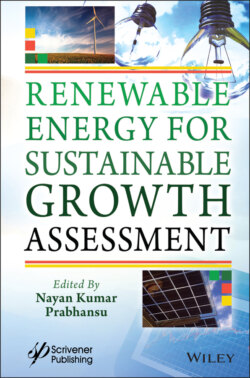Читать книгу Renewable Energy for Sustainable Growth Assessment - Группа авторов - Страница 72
3.2 Non-Renewable Energy Resources: Crisis and Demand
ОглавлениеGlobal energy demand mainly depends on non-renewable resources [10], an abundant natural resource for electrical power, emitting greenhouse gas on combustion [11]. The effects of the continuous use of fossil fuels include environmental pollution, cost expensive, political disturbances, and impact on the tourism industry. The energy crisis’s main challenges are climate changes and the effects of depletion [11]. Reasons behind the energy crisis are vast and varied viz., overconsumption, use of electronic gadgets, congestion of people, less economic development, the slow establishment of energy plants, waste of power, inadequate dispersal systems, significant hazards, and natural disasters, conflict, and fights, and various agents [12, 13]. According to data published by the International Renewable Energy Agency (IRENA), until 2019, CO2 emissions in India were rising with an increase in energy demand [3] (Figure 3.3). In 2020, however, due to the lockdown resulting from Covid-19, CO2 emissions, relative to energy demand, CO2 emissions were substantially reduced [14].
Figure 3.2 Biomass categories, various processes of conversion and biofuel products [5–9].
The energy crisis in the world means energy diminishes as the demand for energy from limited non-renewable natural resources increases. But still, the energy market would rise rapidly in the upcoming years [12]. The world’s energy crisis and demand increase slowly, and all countries in the world faced an oil crisis in 1973 and an energy crisis in 1979 [15]. The non-renewable resource takes nearly hundreds of thousands of years to replenish. The energy crisis facing the world at present is higher than the 1970s energy crisis. The government and scientists of all countries aim to control the energy crisis and to meet energy demand using biomass and other renewable resources. The use of bioenergy emits nearly 4,096 thousand tonnes of CO2-eq/year as greenhouse gas emissions [16]. India’s energy generation from renewable resources rose to 113.20 billion units (BU) in 2020 [17].
Figure 3.3 Energy consumption and CO2 emission in India [3].
Energy insecurity is primarily due to cooking scarcity and a higher energy insecurity rate in larger nations [18]. The change in cost is low for all fossil fuels, but the corresponding price elasticity is high for consumption. Accordingly, the rise in the general price level triggered by the reform of subsidies would reduce actual earnings and have similar healthcare consequences in India [19]. Amrutha et al. [20] reported that Feed-in Tariff (FIT) and Renewable Energy Certificate (REC) schemes efficiently operated in India would provide renewable energy utilities with possibilities to benefit from cheaper rates [20].
